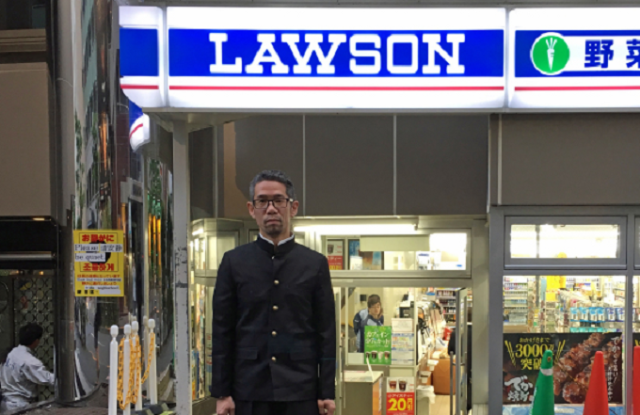
Surprisingly, prunes and nicotine patches didn’t crack the top 10.
As I get older I find it harder and harder to relate to the youth of today what with their Beatles albums, technicolor films, and VTubers. But looking at a new survey of kids in elementary and junior high school, I learned that maybe we really aren’t all that different after all.
The study was done by Bandai, the toy company behind Japanese heavyweight children’s franchises like Anpanman, Kamen Rider, and Pretty Cure. Their goal was to see how much kids are getting for an allowance these days and – more importantly for Bandai – what they’re spending that money on.
According to the survey of 900 kids, roughly half received allowances on a regular basis such as weekly or monthly. However, among them nearly 90 percent receive money from their parents while a little under a quarter get a regular allowance from their grandparents, suggesting a segment of kids who receive dual incomes exists.
▼ Grandpa and grandma are referred to as “jiji“and “baba” respectively in Japan, but they ought to be called “cha” and “ching!“
Grandparents proved to be a lucrative source of allowances as well, with them doling out between 2,000 and 3,500 yen (US$18 – $32) a month on average, compared to a parent’s range of 1,200 to 2,500 yen (US$11 – 23).
So, what are these kids choosing to spend this limited amount of money on? At first, I figured it’d be something trendy like loot boxes or those stamp things you can put on text messages, but I was wrong…
That’s actually pretty in-line with the stuff I used to spend my allowance on back in the day, right down to candy, chips, and pop ruling the roost. The only thing striking me as odd is “savings”, which I can see as a good habit to instill in people at a young age, but man… I’m glad I never saved those measly few bucks a week back then, only to have it sucked into the student loan vortex later on.
“Stationery” was also not something I readily spent my allowance money on back then, but it does seem like a popular commodity for students these days, with a wide range of cleverly shaped items and kits for kids to express themselves by making their own erasers.
Clearly some of those entries, like “transportation” come from the older kids who are influencing the results with their stronger purchasing power. So, perhaps it’s better to see the results when divided between elementary school and junior high.
For the youngest ones, the holy trinity of “junk food,” “stationery,” and “manga” is intact, but some of the more mature offerings such as a “eating out” for dinner and the “transportation” to get there have given way to battle “card games” and “clothes and accessories.”
And with junior high students, “toys” fall off the map completely to make space for activities that allow them to flex their newly independent muscles like going to the “movie theater” and giving “gifts for friends.” And yet, once again, you just can’t beat “junk food,” “stationery,” and “manga.”
It just goes to show that more things change, the more they stay the same. Heck, even after all these years I still spend the lion’s share of my pocket money on junk food from the corner store.
▼ Convenience stores even sell sake, shochu, and wine in little drinking boxes to help keep your inner child alive and well. Wheee…
This should be comforting news for Bandai as well, as their armada of stationery, toys, video games, and snack foods are still in demand and selling well. Even we here at SoraNews24 can use this information to make a little bit of cash on the side by selling all those extra bags of Mr. Sato candy we have lying around the office.
Source: Bandai, Netlab
Photos ©SoraNews24
● Want to hear about SoraNews24’s latest articles as soon as they’re published? Follow us on Facebook and Twitter!

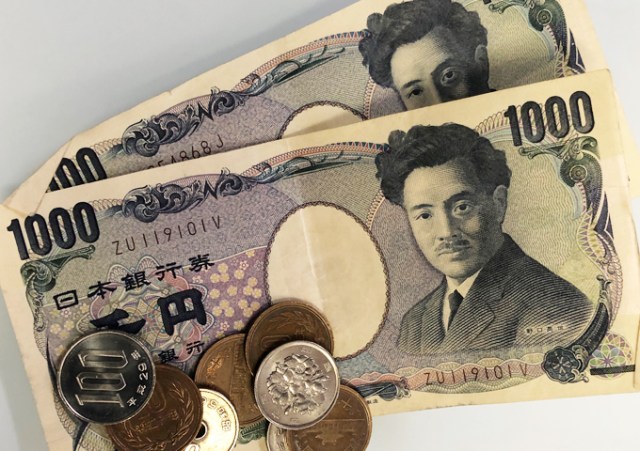
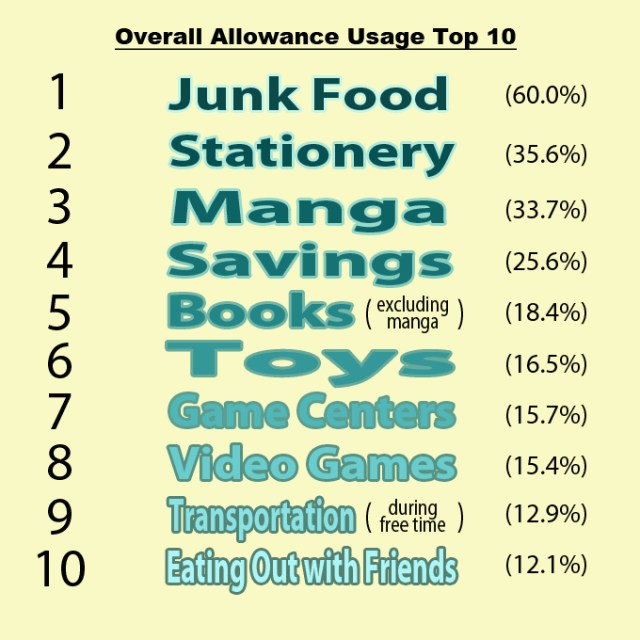

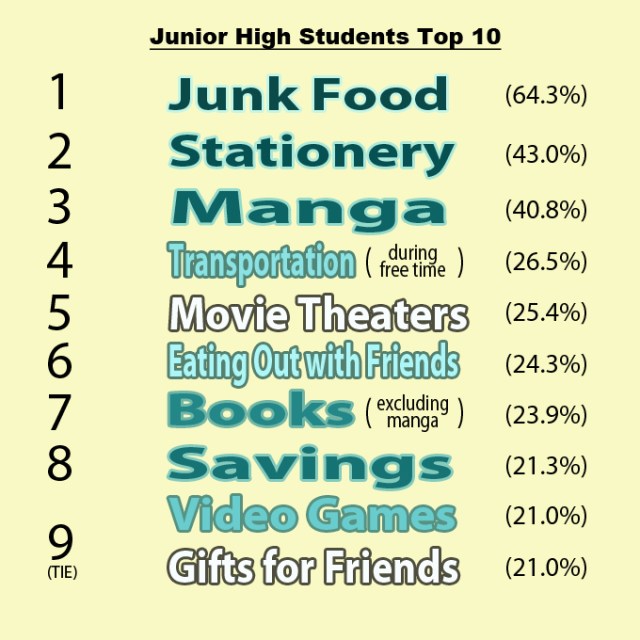
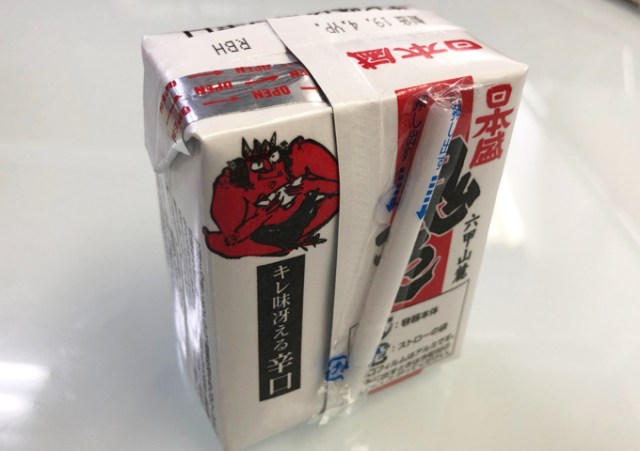
 Flush with New Year’s present cash, Japanese kids can now look forward to…saving it
Flush with New Year’s present cash, Japanese kids can now look forward to…saving it Movies vs Reality: Can duct tape really be used to shut someone up? Korean YouTuber finds out
Movies vs Reality: Can duct tape really be used to shut someone up? Korean YouTuber finds out Is it a crime to ditch a bad date and leave them with the bill? Japanese man finds out
Is it a crime to ditch a bad date and leave them with the bill? Japanese man finds out How much should we give in a New Year’s otoshidama without looking like a jerk?
How much should we give in a New Year’s otoshidama without looking like a jerk? Snappy as they look, Japanese school uniforms can be an extremely expensive hassle for parents
Snappy as they look, Japanese school uniforms can be an extremely expensive hassle for parents Japan’s new difficult-to-drink-from beer glass protects your liver, but it’s a brutal experience
Japan’s new difficult-to-drink-from beer glass protects your liver, but it’s a brutal experience How to order snacks on a Shinkansen bullet train in Japan
How to order snacks on a Shinkansen bullet train in Japan New samurai glasses are Japan’s latest weird must-have souvenir
New samurai glasses are Japan’s latest weird must-have souvenir New Pokémon ice cream, dessert drinks, and cool merch coming to Baskin-Robbins Japan【Pics】
New Pokémon ice cream, dessert drinks, and cool merch coming to Baskin-Robbins Japan【Pics】 Doraemon found buried at sea as scene from 1993 anime becomes real life【Photos】
Doraemon found buried at sea as scene from 1993 anime becomes real life【Photos】 Burger King Japan suddenly adds Dr. Pepper and Dr. Pepper floats to its menu nationwide
Burger King Japan suddenly adds Dr. Pepper and Dr. Pepper floats to its menu nationwide Starbucks Japan welcomes alpacas for cute summer drinkware line【Photos】
Starbucks Japan welcomes alpacas for cute summer drinkware line【Photos】 High-fashion Totoro cuddle purse is like an elegant stroll in the forest【Photos】
High-fashion Totoro cuddle purse is like an elegant stroll in the forest【Photos】 Studio Ghibli hair accessories keep your style tidy with help from Kiki, Moro, Calcifer, and more
Studio Ghibli hair accessories keep your style tidy with help from Kiki, Moro, Calcifer, and more What if Sailor Moon characters were lingerie models? They’d look stunning like this 【Photos】
What if Sailor Moon characters were lingerie models? They’d look stunning like this 【Photos】 Nintendo history you can feel – Super NES, N64, and GameCube controllers become capsule toys
Nintendo history you can feel – Super NES, N64, and GameCube controllers become capsule toys Hello, cosmetics! Clinique teams up with Hello Kitty this summer for first-time collaboration
Hello, cosmetics! Clinique teams up with Hello Kitty this summer for first-time collaboration Demon Slayer: Kimetsu no Yaiba gets new roller coaster attractions and food at Universal Studios Japan
Demon Slayer: Kimetsu no Yaiba gets new roller coaster attractions and food at Universal Studios Japan “The most Delicious Cup Noodle in history” – Japan’s French Cup Noodle wins our heart【Taste test】
“The most Delicious Cup Noodle in history” – Japan’s French Cup Noodle wins our heart【Taste test】 Starbucks releases a cute Frappuccino and Unicorn Cake…but not in Japan
Starbucks releases a cute Frappuccino and Unicorn Cake…but not in Japan Kyoto Tower mascot termination reveals dark side behind cute Japanese characters
Kyoto Tower mascot termination reveals dark side behind cute Japanese characters McDonald’s Japan’s Soft Twist Tower: A phantom ice cream only sold at select branches
McDonald’s Japan’s Soft Twist Tower: A phantom ice cream only sold at select branches Yabai Ramen: What makes this Japanese ramen so dangerous?
Yabai Ramen: What makes this Japanese ramen so dangerous? Finally! Nintendo Japan expands Switch 8-bit controller sales to everybody, Online member or not
Finally! Nintendo Japan expands Switch 8-bit controller sales to everybody, Online member or not Japanese government wants to build luxury resorts in all national parks for foreign tourists
Japanese government wants to build luxury resorts in all national parks for foreign tourists To combat declining birth rate, Japan to begin offering “Breeding Visas” to foreigners
To combat declining birth rate, Japan to begin offering “Breeding Visas” to foreigners 10 things you should buy at 7-Eleven in Japan
10 things you should buy at 7-Eleven in Japan Studio Ghibli releases anime heroine cosplay dresses that are super comfy to wear
Studio Ghibli releases anime heroine cosplay dresses that are super comfy to wear Woman charged for driving suitcase without a license in Osaka
Woman charged for driving suitcase without a license in Osaka Studio Ghibli unveils My Neighbour Totoro miniature house model
Studio Ghibli unveils My Neighbour Totoro miniature house model Kyoto experiencing problems with foreign tourists not paying for bus fares, but not on purpose
Kyoto experiencing problems with foreign tourists not paying for bus fares, but not on purpose Fighting mild hunger with a Japanese soda that turns into jelly in the stomach【Taste test】
Fighting mild hunger with a Japanese soda that turns into jelly in the stomach【Taste test】 Studio Ghibli’s Howl’s Moving Castle tapestry unveiled in Japan for first time
Studio Ghibli’s Howl’s Moving Castle tapestry unveiled in Japan for first time McDonald’s new Happy Meals offer up cute and practical Sanrio lifestyle goods
McDonald’s new Happy Meals offer up cute and practical Sanrio lifestyle goods Sales of Japan’s most convenient train ticket/shopping payment cards suspended indefinitely
Sales of Japan’s most convenient train ticket/shopping payment cards suspended indefinitely Sold-out Studio Ghibli desktop humidifiers are back so Totoro can help you through the dry season
Sold-out Studio Ghibli desktop humidifiers are back so Totoro can help you through the dry season Japanese government to make first change to romanization spelling rules since the 1950s
Japanese government to make first change to romanization spelling rules since the 1950s Foreigner’s request for help in Tokyo makes us sad for the state of society
Foreigner’s request for help in Tokyo makes us sad for the state of society Ghibli founders Toshio Suzuki and Hayao Miyazaki contribute to Japanese whisky Totoro label design
Ghibli founders Toshio Suzuki and Hayao Miyazaki contribute to Japanese whisky Totoro label design Tokyo’s most famous Starbucks is closed
Tokyo’s most famous Starbucks is closed Princesses, fruits, and blacksmiths: Study reveals the 30 most unusual family names in Japan
Princesses, fruits, and blacksmiths: Study reveals the 30 most unusual family names in Japan Yo-Kai What? Monsters of all kinds plummet from children’s favorite character rankings
Yo-Kai What? Monsters of all kinds plummet from children’s favorite character rankings At what age should parents stop giving kids New Year’s otoshidama money? Japanese netizens answer
At what age should parents stop giving kids New Year’s otoshidama money? Japanese netizens answer Immersive Museum offers impressive impressionist fun this summer in Tokyo
Immersive Museum offers impressive impressionist fun this summer in Tokyo 7-year-old turns cash into “art”, parents decidedly unamused
7-year-old turns cash into “art”, parents decidedly unamused Top five Japanese prefectures for childhood education expenditure would make any wallet shudder
Top five Japanese prefectures for childhood education expenditure would make any wallet shudder Petition to allow students to choose what they wear to school gathers almost 19,000 signatures
Petition to allow students to choose what they wear to school gathers almost 19,000 signatures Japanese schools banning nicknames, mandating use of -san divides opinions
Japanese schools banning nicknames, mandating use of -san divides opinions What do Japanese kids want to be when they grow up? For 30 percent of boys, YouTubers, survey says
What do Japanese kids want to be when they grow up? For 30 percent of boys, YouTubers, survey says Studio Ghibli releases new action figures featuring Nausicaä of the Valley of the Wind characters
Studio Ghibli releases new action figures featuring Nausicaä of the Valley of the Wind characters Japanese students’ eyesight the worst in recent years, smartphones and mobile games are blamed
Japanese students’ eyesight the worst in recent years, smartphones and mobile games are blamed Younger Japanese men less interested in drinking, according to survey
Younger Japanese men less interested in drinking, according to survey Survey shows “YouTuber” among top jobs Japanese kids want when they grow up
Survey shows “YouTuber” among top jobs Japanese kids want when they grow up Possibly Japan’s worst dad reportedly sells kids’ Nintendo Switch so he can buy new golf club
Possibly Japan’s worst dad reportedly sells kids’ Nintendo Switch so he can buy new golf club Teacher says Japanese schools’ mandatory extracurricular activity rules don’t benefit students
Teacher says Japanese schools’ mandatory extracurricular activity rules don’t benefit students Survey reveals most Japanese workers want to work from home at least twice per week
Survey reveals most Japanese workers want to work from home at least twice per week
Leave a Reply